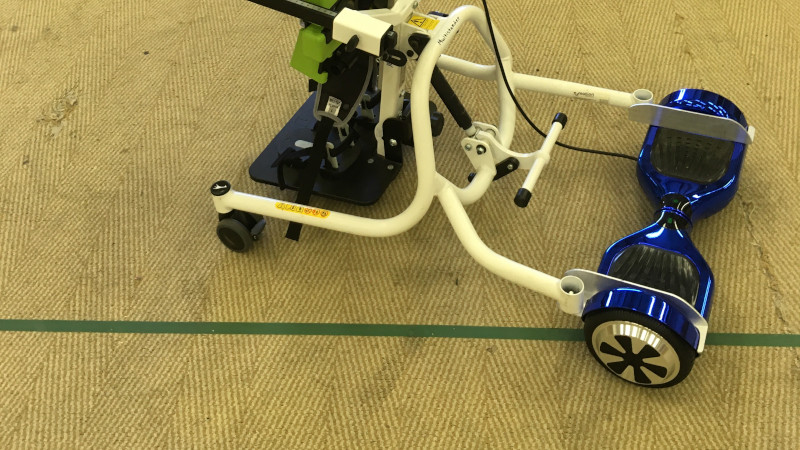Assistive devices for people with disabilities can make an inestimable difference to their lives, but with a combination of technology, complexity, and often one-off builds for individual needs, they can be eye-wateringly expensive. When the recipient is a young person who may grow out of more than one device as they mature, this cost can be prohibitive. Some way to cut down on the expense is called for, and [Phil Malone] has identified the readily available hoverboard as a possible source of motive power for devices that need it.
Aside from being a children’s toy, hoverboards have been well and truly hacked; we’ve featured them in Hacky Racers, and as hacker camp transport. But this is an application which demands controllability and finesse not needed when careering round a dusty field. He’s taken that work and built upon it to produce a firmware that he calls HUGS, designed to make the hoverboard motors precisely controllable. It’s a departure from the norm in hoverboard hacking, but perhaps it can open up new vistas in the use of these versatile components.
There is much our community can do when it comes to improving access to assistive technologies, and we hope that this project can be one of the success stories. We would however caution every reader to avoid falling into the engineer savior trap.



















Before anybody chimes in with “proper medical devices are extensively tested and certified”
reread the section that says “When the recipient is a young person who may grow out of more than one device as they mature, this cost can be prohibitive.”
“This cost can be prohibitive.”
People ain’t got the 15 grand to buy a Tested And Certified Mobility Aid for a 12yo that they’ll grow out of in less than two years. And that’s IF insurance will even meet them halfway. The more uncommon a specific mobility need is, the more expensive it becomes to assist, because the economy of volume amortizing the cost of testing and certs isn’t there for manufacturing.
The wheels of Insurance tend to move slowly, as well. Projects like this can be the difference between a happy kid and a miserable teenager, because insurance is dragging heels for multiple years.
Remember this?
https://hackaday.com/2016/08/19/swedish-senior-rolls-in-style-with-hybrid-hoverboard-walker/
I have been using a Segway Mini-Pro as an assistive device for several years now. I have trouble walking and controlling my feet, but I can grip the short post between my knees to overcome that difficulty. As a former skier, I find its use to be quite intuitive, and it gets me where I need to go and fits easily in the back of my car.
Something ironic about seeing one of these being used to help the disabled.
First it injures then it assists lol